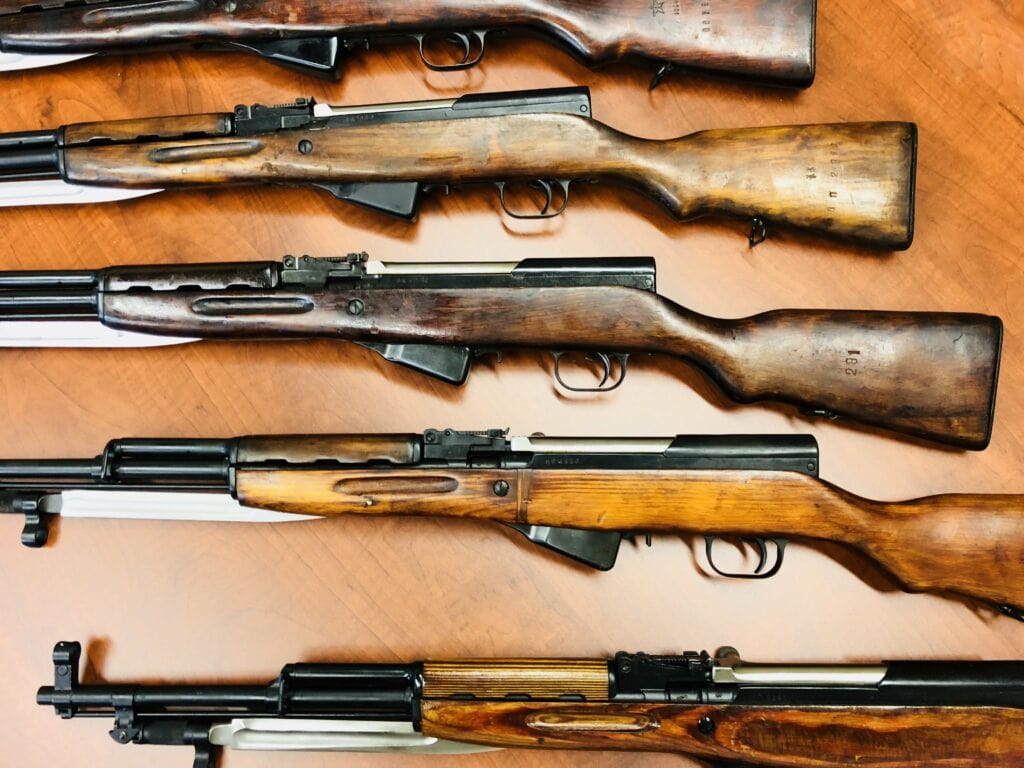The SKS rifle is a symbol of the initial stages of experimentation by the Soviet Union—trying to develop a modern assault rifle in an intermediate caliber. Similar to other legendary rifles like the M1 Garand, AK-47, and the M16, the SKS also saw a lot of action and mass production but quickly lost its glitter as weapon tech advanced.

The SKS is a collectible and widely recognized hunting and sporting rifle in many countries of the world. But it has a long history and vivid characteristics to describe. Which is what exactly we’ll be doing here.
An Introduction to the SKS
From the peak of the Second World War and towards its conclusion, it was clearly becoming evident that the existing calibers and rifles were too overpowered, bulky and long to be used for assault roles.
Rifles like the SVT 40, Mosin Nagant, and AVS 36 were not only cumbersome to handle, but the big calibers were suitable for ranges out to 2,000 yards or so. Whereas most combat engagements took place in the 100 to 400 yards range.
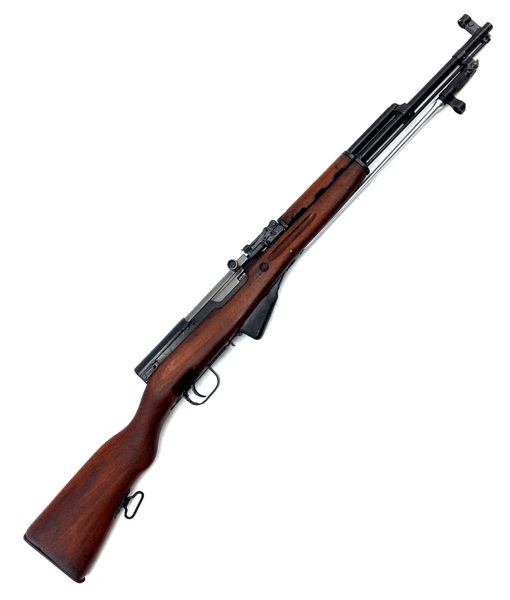
In 1944, Soviet firearms designer Sergei Gavrilovich Simonov came up with the design of the Samozaryadny Karabin sistemy Simonova a.k.a the SKS. The design was quickly adopted by the Soviet Red Army and was fielded in service from 1945.
The SKS is a semi-automatic carbine chambered for the 7.62×39 mm round. It features a 10 round hinged magazine that is loaded via stripper clips. The mag can be hinged out to release all rounds at once.
The rifle features a permanently attached folding bayonet and lacks select fire capability. The Soviets manufactured about 2.7 million units of the SKS at Tula and Izhevsk arsenals. The design was further distributed by the USSR to its ally states.
The SKS saw the most production by the People’s Republic of China. It was renamed the Chinese Type 56/SKS where it served as a primary service rifle of the Chinese Army for over 30 years.
The major variants of the SKS in circulation today are the Soviet SKS, Chinese Type 56/SKS (Norinco SKS), and the Yugoslavian SKS.
Today, an SKS rifle can be purchased for an average price of $700 on the U.S market. Since over 15 million of these rifles were produced (it is still in production), there’s never going to be any shortage or major price surge for these.
What the SKS Does Best
The SKS was introduced as an assault carbine for the frontline troops. However, with the introduction of the AK-47 in 1949, the use of the SKS was quite short lived in the Soviet Army.
But it is also important to consider that the SKS has also been one of the most widely used rifles of all time in wars and conflicts—from state armies to guerilla fighters. The clientele of the SKS is wide and far stretched.
The SKS is chambered in the 7.62×39 mm cartridge, the same thing that an AK-47 shoots. Anybody familiar with rifle calibers knows that the 7.62 AK round is a great pick for short to medium-range engagements. But accuracy starts to splatter out beyond that range—resulting in massive drops every 100 yards.

Being chambered in the 7.62 AK and with a carbine length design, the SKS can be seen as a viable defense firearm. But only as a last resort and when you have wide hallways to easily maneuver the barrel around.
As the Chinese and other militaries began phasing out the SKS out of service. A large influx of these rifles was seen in the United States, resulting in dirt-cheap prices and to the point that the SKS began being called the ‘poor man’s deer rifle’.
The SKS is also a viable hunting rifle and may also double as an appropriate scouting rifle in some cases. If your state allows you to put a detachable magazine on this, shooting this rifle can be more fun in recreational events.
Given the limitation of the 7.62×39 mm round and the accuracy of this rifle, the SKS is more of a workhorse rather than a precision rig. Additionally, the cheap cost and the dirt-cheap prices of the Russian ammo make this rifle great for practice and plinking.
Where the SKS Falls Short
The SKS is a decent rifle, especially for a milsurp commie gun. The rifle was designed to be a mass-produced carbine for military service. Although it works great on some points, there are also certain drawbacks that can make it a less-than-desirable gun. Especially when compared with other more popular options like the AK’s and AR’s.
The 7.62×39 mm is a powerful round but it has its limitations. Similarly, the SKS is a good rifle, but it isn’t match-accurate. You can expect a 3-5 inch group at 100 yards at best from it. This certainly limits its use to a hunting and plinking rifle.
But the point is what else can you expect from a low-cost milsurp rifle that chews through everything from polished brass to cheap steel-cased ammo.
Another small complaint that I come across quite often is the stubby stock of the SKS. Adults with a muscular body and large hands outline that the stock of this rifle feels too short and heavy to handle. The stock in question here is the traditional Walnut stock, not the modern lightweight polymer stock chassis options.
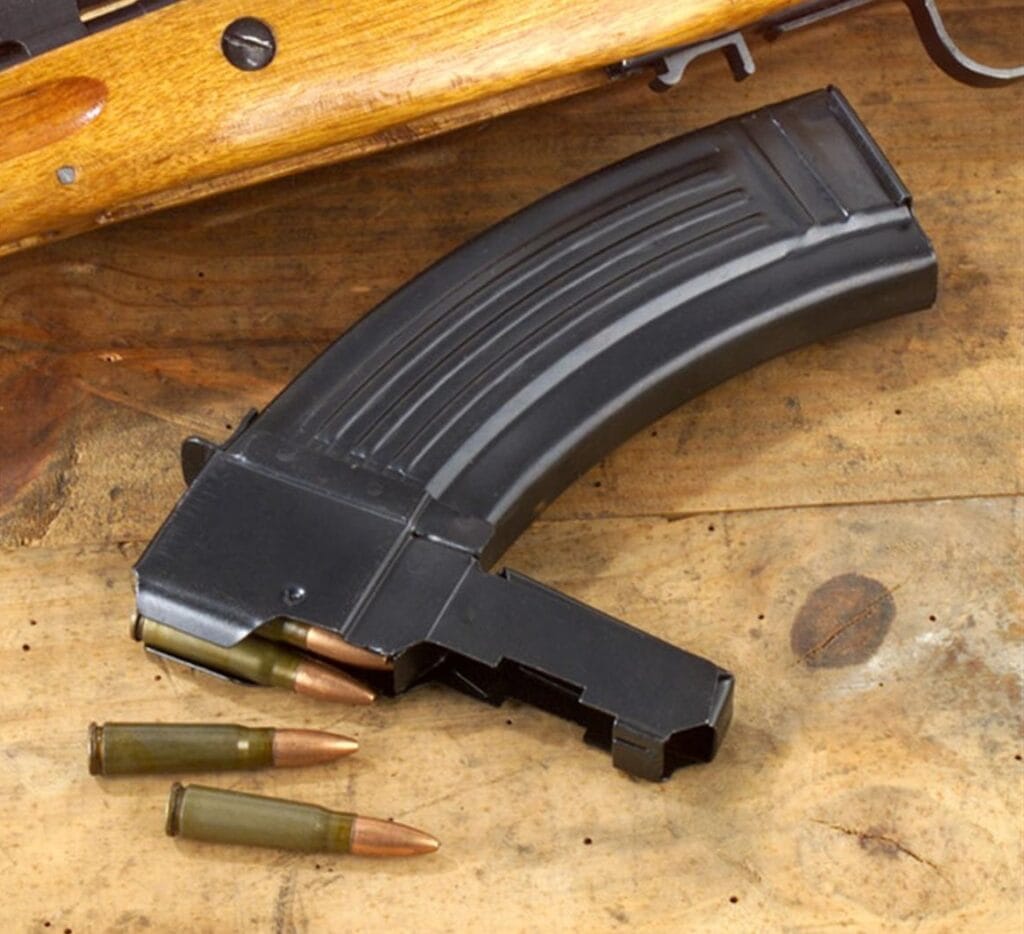
The SKS features an exposed bolt that is open to dirt and any other detritus from the outside. This means the rifle has to be handled with more care and maintenance in soggy and dirty environments. Additionally, the quality control on SKS rifles isn’t very premium. While one rifle can perform exceptionally well, another from the same crate can prove to be a lemon.
That’s important to know for people who are interested in buying SKS rifles by the crate. Yes, you read that right. People sometimes buy these rifles in bulk for appreciation in value over time. After all, it’s a history piece.
How to Take Advantage of an SKS
The SKS has been around for a long long time now. Its wide availability on the global market has helped develop strong aftermarket support. Although the SKS is not extremely popular and the chances of modification are limited, you should still glance upon a few possible upgrades to make your rifle better.
The first itch many newtime SKS owners develop is to have a good scope on the rifle. As you already know that the SKS isn’t good for targets farther than 300 yards on even the brightest day, selecting a scope for your SKS shouldn’t be rocket science.
Just look out for a durable scope that can withstand the shock of the recoiling bolt, and with only basic magnification as the range won’t be very far. In my opinion, a good 1-4x or 1-6x scope would do great.
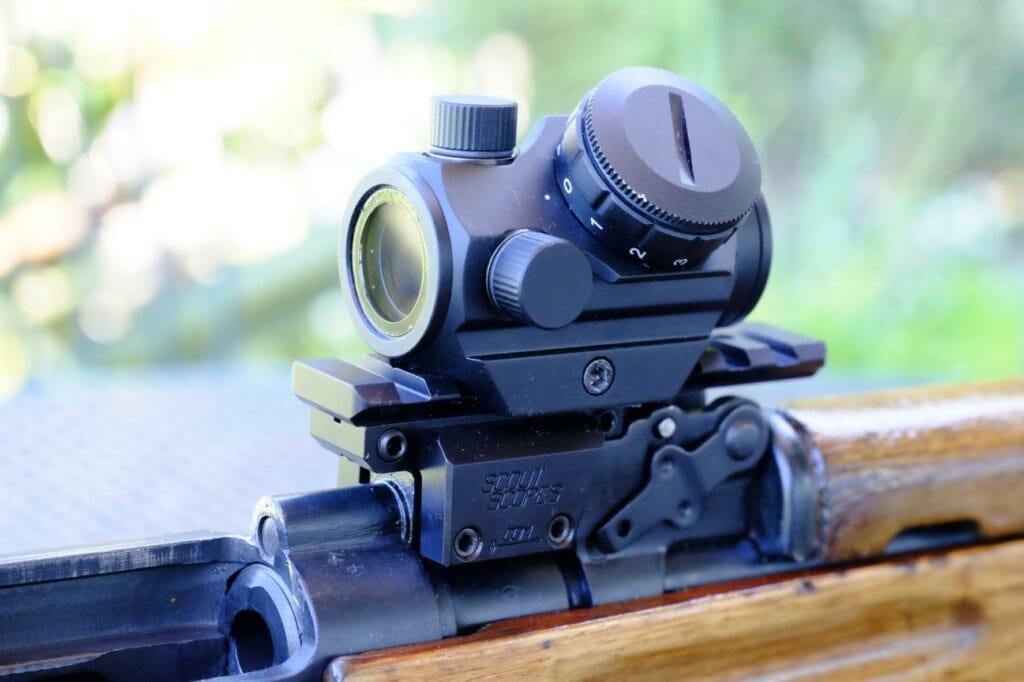
Talking about scopes, make sure you also get the right SKS scope mount and get it installed by a good gunsmith if the receiver isn’t already drilled and tapped.
As I already outlined the weight and ergonomic difficulties that can arise with a traditional SKS wooden stock, you should also check out for SKS stock upgrade options. Transforming your rifle with a more lightweight polymer stock that is also resistant to moisture. You may also look out for features like a pistol grip or adjustable rear for more function.
Many SKS owners will also look forward to attaching a detachable magazine to their rifles. But make sure your state laws allow it. Additionally, the non chrome-lined barrel versions of the SKS are also prone to damage with corrosive ammunition, so make sure to choose the right ammo for your SKS.
Further Reading on the SKS
After all this basic and important info on the SKS. I will encourage you to read further about this amazing rifle and educate yourself further about the in’s and out’s. Especially if you are planning on buying one of these.
The SKS has a long history to tell. From its development in 1945 to its adoption by the Soviet military forces in 1949 and then phasing out in the mid-1950s, the SKS has been a favorite rifle of the communist powers and the former Soviet bloc.
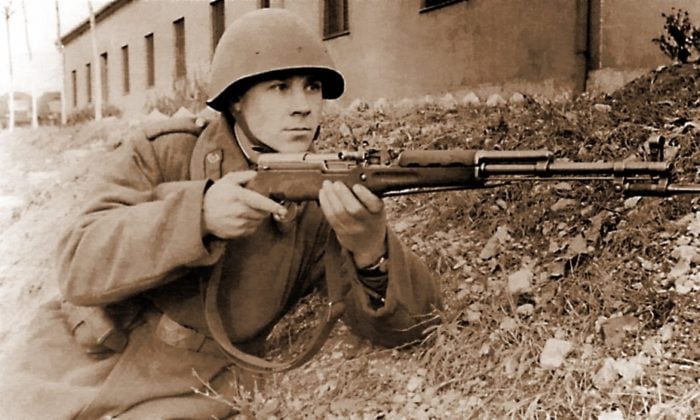
This rifle is still widely used for ceremonial purposes in many countries. And also as a rear line defense weapon with reserve troops, the SKS has seen a lot of combat and conflicts. While the rifle faces a lot of backlash from purists and people who are interested in precision rifles, the SKS is a pure workhorse.
If you own or plan on owning an SKS rifle, make sure you invest some time in learning how to properly clean it. Being chambered in the 7.62×39 mm cartridge, a comparison between the SKS and the AK-47 can also be made. Since both these rifles can be found in the same price range in their basic versions.
Conclusion
The SKS is the Soviet era’s link between the traditional long-range and heavy rifles and the modern assault rifle designs. It was designed to be a lightweight carbine shooting intermediate cartridge and best suited for assault roles in combat.
It is an inexpensive rifle that can work with the best and worst ammunition. Offering acceptable accuracy within a range of 300 meters, while requiring very little maintenance and little grief if it breaks down.
